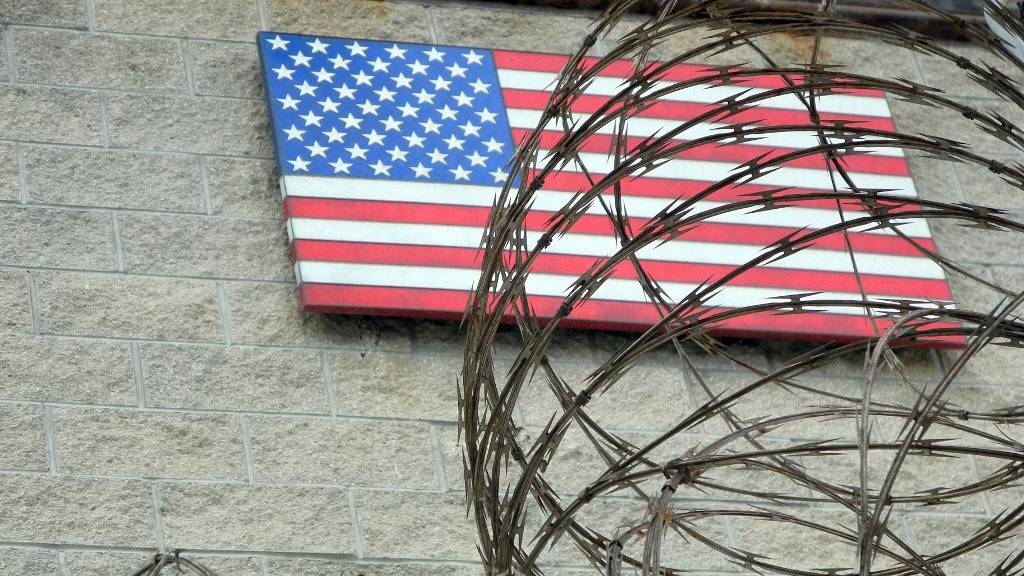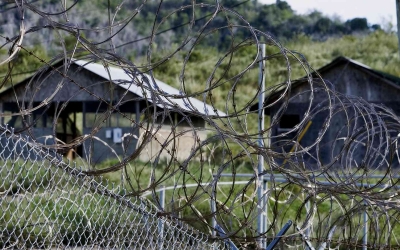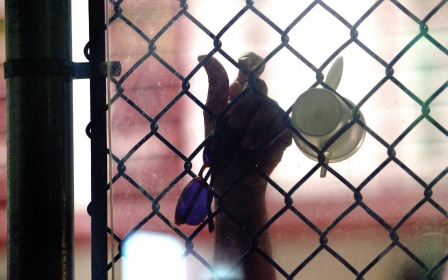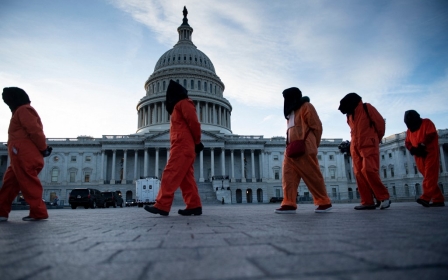CIA black site detainee used as prop, tortured by interrogators for training

A detainee at a CIA black site in Afghanistan was used as a living prop to teach interrogators-in-training, who lined up to take turns experimenting on him - leaving him with brain damage, according to newly declassified documents.
The documents, in a 2008 report by the CIA's inspector general, were publicly revealed as part of a legal battle to obtain an independent medical examination of Ammar al-Baluchi, one of five detainees at Guantanamo Bay charged with participation in plotting the 9/11 attacks.
New MEE newsletter: Jerusalem Dispatch
Sign up to get the latest insights and analysis on Israel-Palestine, alongside Turkey Unpacked and other MEE newsletters
According to the report, the CIA was aware that the 2003 rendition of Baluchi to the "black site" north of Kabul was conducted "extra-legally" because he was in Pakistani jurisdiction at the time and no longer represented a terrorist threat.
It went on to say that at the black site, interrogators went beyond the CIA's guidelines, using two non-approved techniques: a stick behind his knees while he was in a stress position that involved leaning back while kneeling, and dousing him with ice-cold water.
One technique used that was approved by the CIA was "walling", where the detainee's heels were placed against a plywood wall "which had flexibility to it", and a rolled-up towel was put around the person's neck. During the interrogation, Baluchi was naked.
"The interrogators would then grab the ends of the towel in front of and below the detainee's face and shove [Baluchi] backwards into the wall, never letting go of the towel," the report said. One of the interrogators said the goal was to "bounce" the detainee off the wall.
"Typically a session did not last for more than two hours at a time," and the reason they lasted so long was because Baluchi was being used as a teaching prop.
One former trainee told investigators that "all the interrogation students lined up to 'wall' Ammar so that [the instructor] could certify them on their ability to use the technique". The fact that interrogators lined up suggested that "certification was key", according to the report.
'Severe brain damage'
While the interrogators were convinced that Baluchi - a nephew of Khalid Sheikh Mohammed, the alleged mastermind of the 9/11 attack, had key information in regards to "pending terrorist attacks", the inspector general's report also concluded that Baluchi's treatment did not yield any useful intelligence. It called the CIA's logic in justifying the detention "fuzzy and circular".
Baluchi, a 44-year-old Kuwaiti national also known as Ali Abdul Aziz Ali, spent more than three years in CIA custody and was moved between a total of six "black sites" before being transferred in 2006 to Guantanamo Bay.
His case has been in pre-trial hearings for 10 years, with delays having to do with a dispute over the legal admissibility of testimony obtained after torture.
"If the CIA had not hidden their own conclusions about the illegality of Omar's torture for this long, the US government would not have been able to bring charges against Ammar because we now know that the torture inflicted on Ammar led to lasting brain damage in the form of a traumatic brain injury and other debilitating illnesses that cannot be treated at Guantánamo Bay," Alka Pradhan, one of Baluchi's attorneys, told The Guardian.
According to Pradhan, a neuropsychologist carried out an MRI of Baluchi's head in October 2018 and found "abnormalities indicating moderate to severe brain damage" in the parts of his brain affecting memory formation, retrieval, and behavioural regulation.
According to another neuropsychologist's evaluation of Baluchi in early 2020, the Guantanamo detainee's psychological functioning has "seriously diminished" as a result of the torture, leaving him with a host of issues including traumatic brain injury, anxiety, depression, and post-traumatic stress disorder.
The release of the documents on Tuesday comes a week after another Guantanamo detainee, Mohammed al-Qahtani, was released and transferred to his home country of Saudi Arabia, where he will receive treatment for schizophrenia.
Qahtani, who was captured in 2001 and sent to Guantanamo Bay in 2002, was also suspected by the US of being a key player in planning the 9/11 attacks. However, in 2008, the charges against him were dismissed "without prejudice" due to the torture he endured while in captivity.
This article is available in French on Middle East Eye French edition.
Middle East Eye delivers independent and unrivalled coverage and analysis of the Middle East, North Africa and beyond. To learn more about republishing this content and the associated fees, please fill out this form. More about MEE can be found here.





